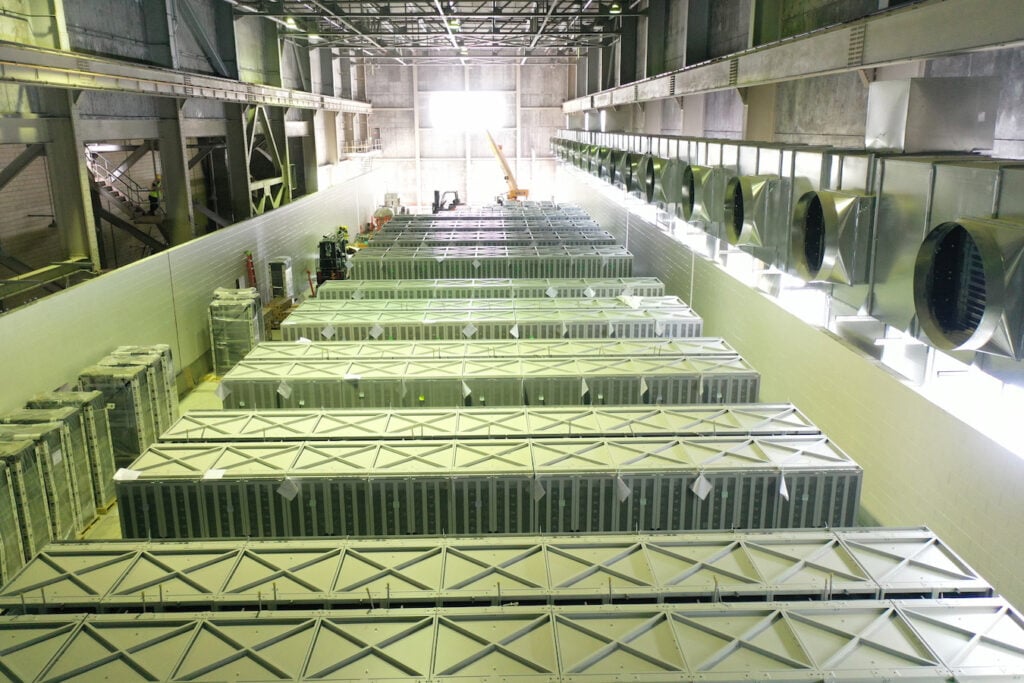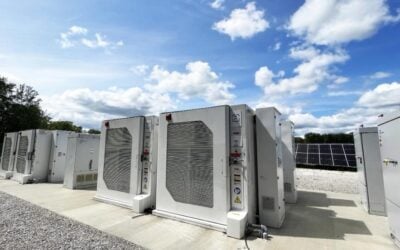
The US energy storage industry enjoyed another quarter of record growth in Q2 2023, with 1,680MW/5,597MWh of new installations tracked by Wood Mackenzie.
The research and analysis group has just published the newest, Q3 2023 edition of its US Energy Storage Monitor report in partnership with the American Clean Power Association (ACP) trade group.
Enjoy 12 months of exclusive analysis
- Regular insight and analysis of the industry’s biggest developments
- In-depth interviews with the industry’s leading figures
- Annual digital subscription to the PV Tech Power journal
- Discounts on Solar Media’s portfolio of events, in-person and virtual
It found that the grid-scale segment of the market drove installations to their highest level ever seen, representing a 116% quarter-on-quarter overall rise. There were 1,510MW and 5,109MWh of grid or utility-scale (front-of-the-meter) deployments in the three month period from March to June.
However, the picture was not entirely rosy: residential as wee as commercial and industrial (C&I) segments slowed when compared quarter-on-quarter to Q1. 137.8MW/381.2MWh of residential installs were recorded in Q2 versus 155.2MW/388.2MWh in the preceding quarter, for example.
In megawatt-only terms as provided to Energy-Storage.news by Wood Mackenzie, the C&I segment did 32.5MW in Q2 versus 69.1MW in Q1 – albeit the first quarter was itself a record-breaker for the segment.
Furthermore, the grid-scale segment could’ve soared even higher but was hampered by delays.
In fact, 1.7GW of new grid-scale front-of-the-meter (FTM) projects in the development pipeline which had expected commissioning dates in the third quarter have been pushed back into future years, according to Wood Mackenzie. A further 380MW was cancelled entirely.
Those less positive aspects of the quarterly performance will not have come as a major shock to industry watchers, with Wood Mackenzie having noted in its Q2 report that supply chain constraints and queues to interconnect to the grid were among major factors in causing delays.
The firm had described those as “rolling delays” and in Q1 2023 had already included numerous large-scale battery energy storage system (BESS) projects intended to come online in 2022.
Meanwhile the slowdown in the two distributed (behind-the-meter) segments appears to be more of a stumble than a fall: C&I installation levels were up considerably when compared year-on-year and residential installs fell slightly in megawatts but also went up slightly when measured in megawatt-hours.
Grid-scale: California leads, average durations hit 3.5-hours in six states
The growth of grid-scale was driven yet again by a dominant California market. 350MW/1,400MWh of new capacity added to power producer Vistra Energy’s Moss Landing Energy Storage Facility in the state represented the single biggest addition.
The project is currently the world’s largest grid-connected lithium-ion energy storage facility and looks set to retain that title a little while longer with the expansion. California accounted for just under half (49%) of grid-scale installations, deploying 738MW in total in the three months.
Another interesting takeaway is that average durations of 3.5 hours were recorded for grid-scale projects in six out of the 10 states in which deployments were made. Previously, it had been mainly in California and to a lesser extent in other states in the Southwest and Western US such as Arizona and Nevada where 4-hour projects had driven up that average.
As to the delays mentioned above, Wood Mackenzie analyst Vanessa Witte commented that may projects in the backlog had been cleared in Q2 despite the continued challenges for others. Witte said the quarter saw a “huge bounce back” for the sector, but lamented the large number of projects still affected.
“Many projects delayed from prior quarters, largely due to supply chain issues, were able to come to fruition this past quarter. However, even with the record, the projected pipeline did not fully materialise, with more than 2GW pushed back,” Witte said.
67GW forecast to 2027
In the previous edition of the US Energy Storage Monitor, Wood Mackenzie had predicted around 75GW of deployments at all scales between 2023 and 2027. In this latest one, that figure has dropped to 67GW, while grid-scale will represent about 83% (55GW) of those additions.
This is largely due to still-unresolved supply chain and interconnection challenges. There has been some good news in both regards: the lithium supply chain appears to be coming back into some sort of balance, while high profile moves are being made in the US, most notably by the Federal Energy Regulatory Commission (FERC) to reform the connection process.
But, as Energy-Storage.news heard from various sources last week at the RE+ 2023 trade event, it is now mostly other key components besides batteries that are supply chain-constrained. High voltage transformers, but also switchgear and even enclosures are experiencing much longer lead times than before.
Wood Mackenzie’s install numbers are a little lower in megawatt terms than those reported by S&P Global, which produced its own report in late August. S&P Global Commodities said 1.931GW was deployed in all segments in Q2 2023. The rival firm did broadly agree that California was the leader, again finding that just under half of all installed capacity to date across the country is on the California Independent System Operator (CAISO) grid.
In Q1, Texas’ ERCOT market had been the leader, according to ACP’s own reporting of the utility-scale market, accounting for about 70% of new deployments. While no figures for Texas were referred to in material shared with this site by Wood Mackenzie, S&P Global had said there were no new projects deployed in the ERCOT market in Q2 in its report from August.
Our publisher Solar Media is hosting the 10th Solar and Storage Finance USA conference, 7-8 November 2023 at the New Yorker Hotel, New York. Topics ranging from the Inflation Reduction Act to optimising asset revenues, the financing landscape in 2023 and much more will be discussed. See the official site for more details.






